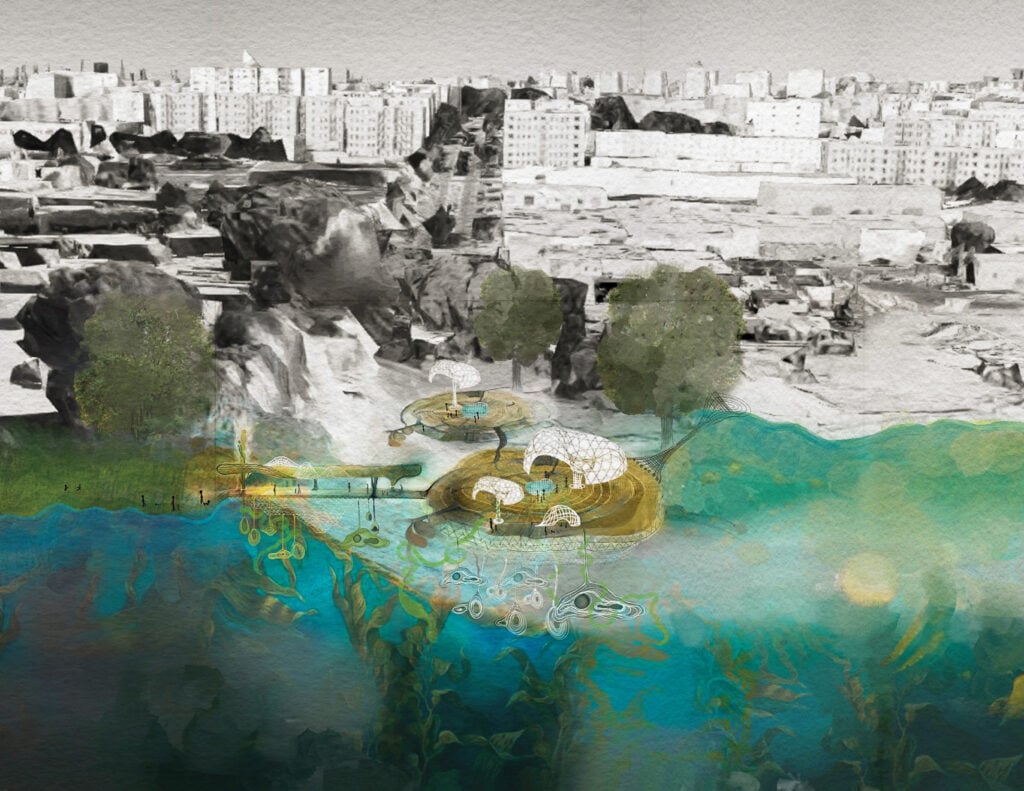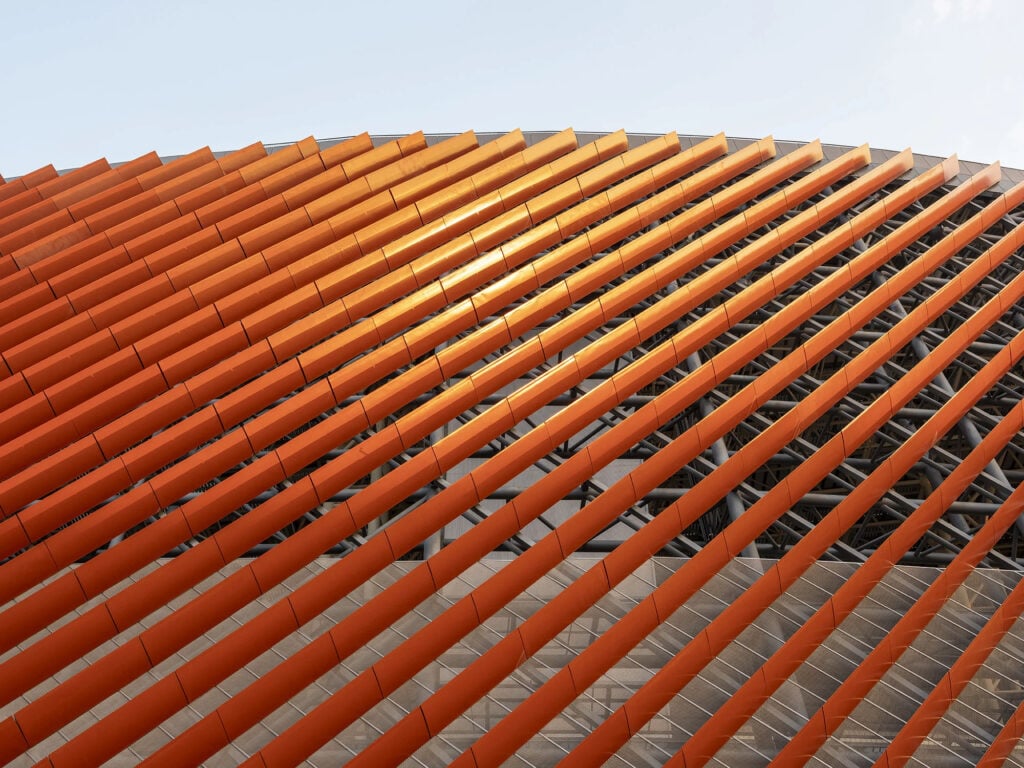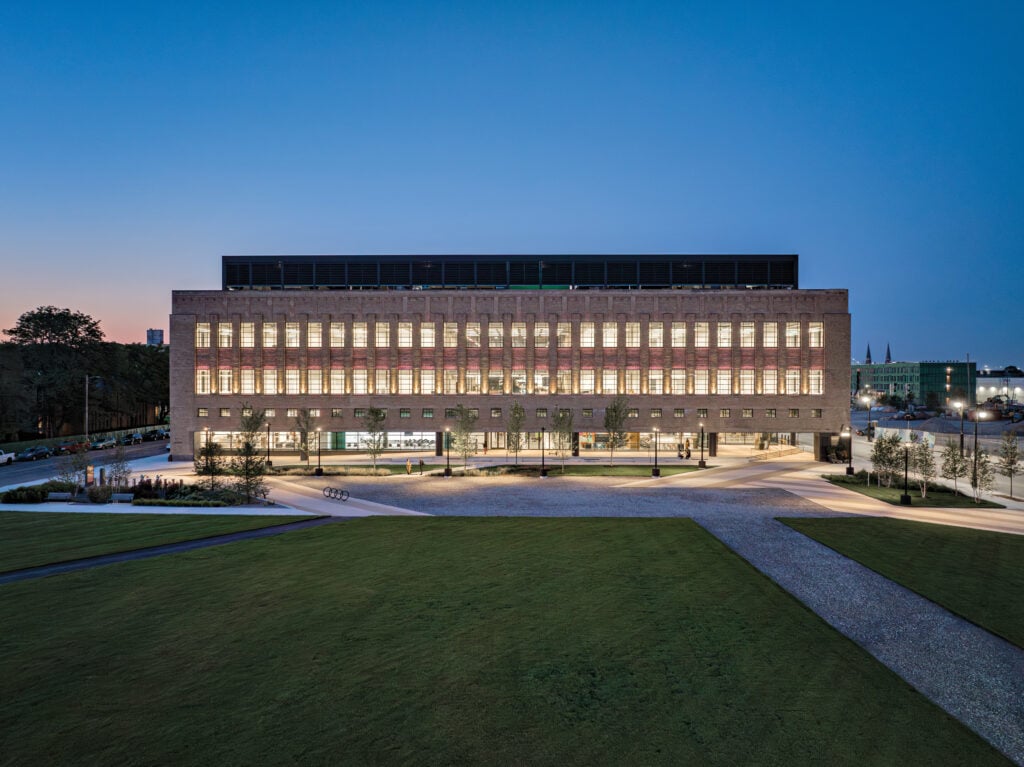
July 10, 2024
This New Cultural District is Creating Community on Detroit’s East Side
“It is a place of experimenting. It is a place of new ideas. But there is a lot of history here that needs to be addressed. It’s not a blank canvas.”
– Anthony Curis
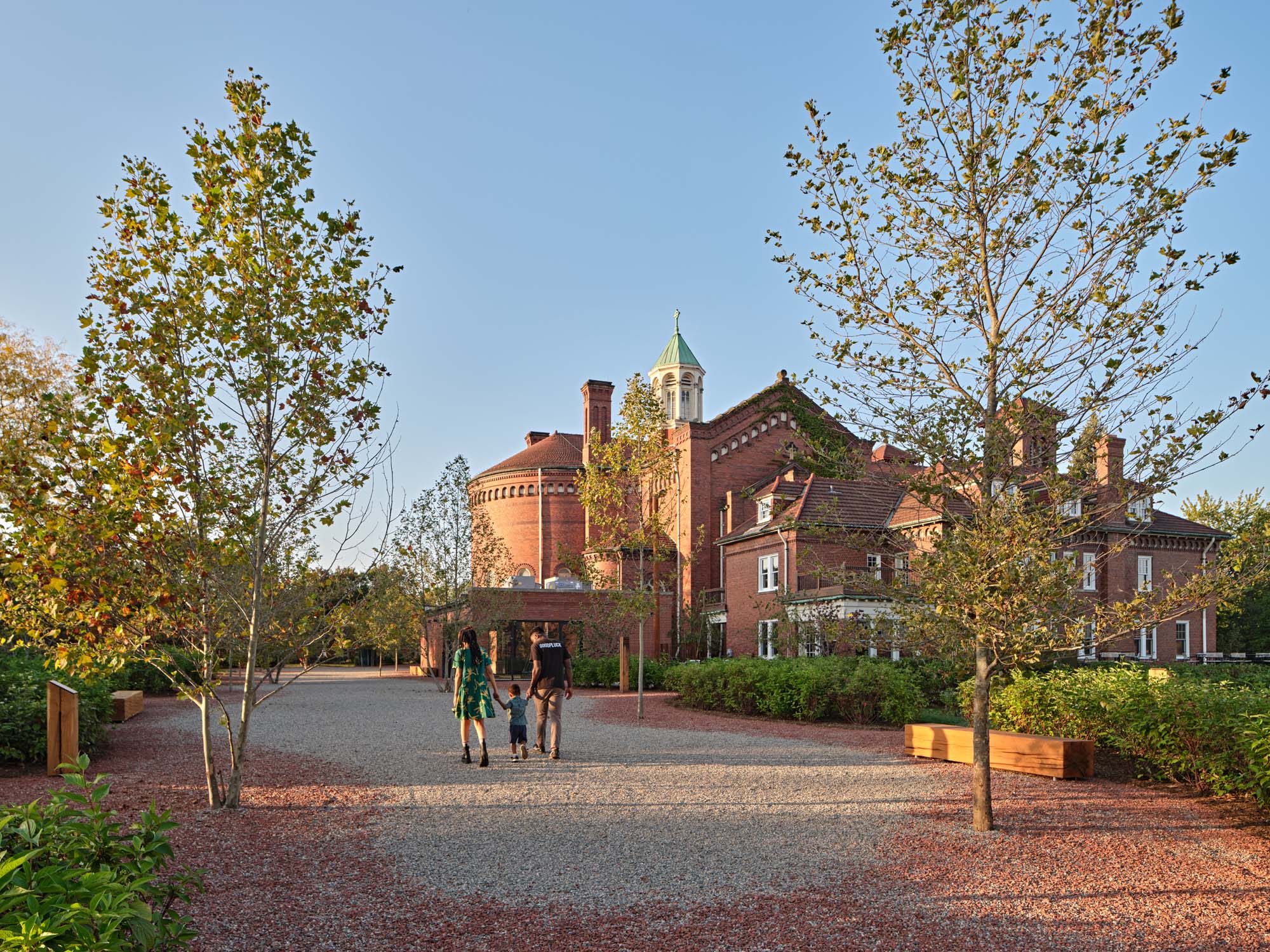
A Revitalization Centered Around the Arts
The splendidly restored church, with its twin turrets, detailed red brickwork, and banded white ornament, now exudes the old-world grace of an earlier era. Inside, it contains a completely new program: glowing, white gallery spaces, high-ceilinged performance areas, and the Little Village Library, a collection of monographs, catalogues, and research materials centered on people of color, occupying the church’s south transept (and, in part, its former confessionals). Outside the edifice is now ringed by reused buildings—including the former rectory housing reimagined as ALEO, a bed-and-breakfast (and the headquarters of artist McArthur Binion’s BIPOC artist–supporting Modern Ancient Brown Foundation), and two former homes now hosting culinary arts spaces, including a new pâtisserie—as well as a layered landscape that consists of a sculpture garden dedicated to the work of legendary local artist Charles McGee, a Tony Hawk-designed skatepark, and discreet areas for lounging, escaping, or enjoying public art.
A few blocks north, the Curises have helped launch Lantern, a renovated former commercial bakery now home to Signal Return, a local print maker and educator; the Progressive Art Studio Collective (PASC), dedicated to supporting artists with developmental disabilities and mental health differences; and Assemble Sound, a local recording studio. The space will also host local food and retail, like Collect Beer Bar and Café Franco.
It goes without saying that this is a sprawling, formidable endeavor. There’s so much here that it’s hard to keep track. The Curises are attempting to not just reinvigorate a building, or a piece of a neighborhood, but the entire East Village; which could in turn become a model for neighborhood development in a city where Downtown Detroit’s renaissance has to this point dominated local momentum. In addition to Little Village, they’ve helped restore a few derelict homes—now the residences, studios, and galleries of Detroit artists and designers like Castor Design and I.M. Weiss Gallery—and are planning a contemporary art space, Louis Buhl & Co. (currently located downtown), inside the remains of an adjacent former convent, as well as Stanton Yards, a riverside development to the south transforming an old marina into a 13-acre cultural community, incorporating commercial and creative spaces, boat slips, and waterfront parks.
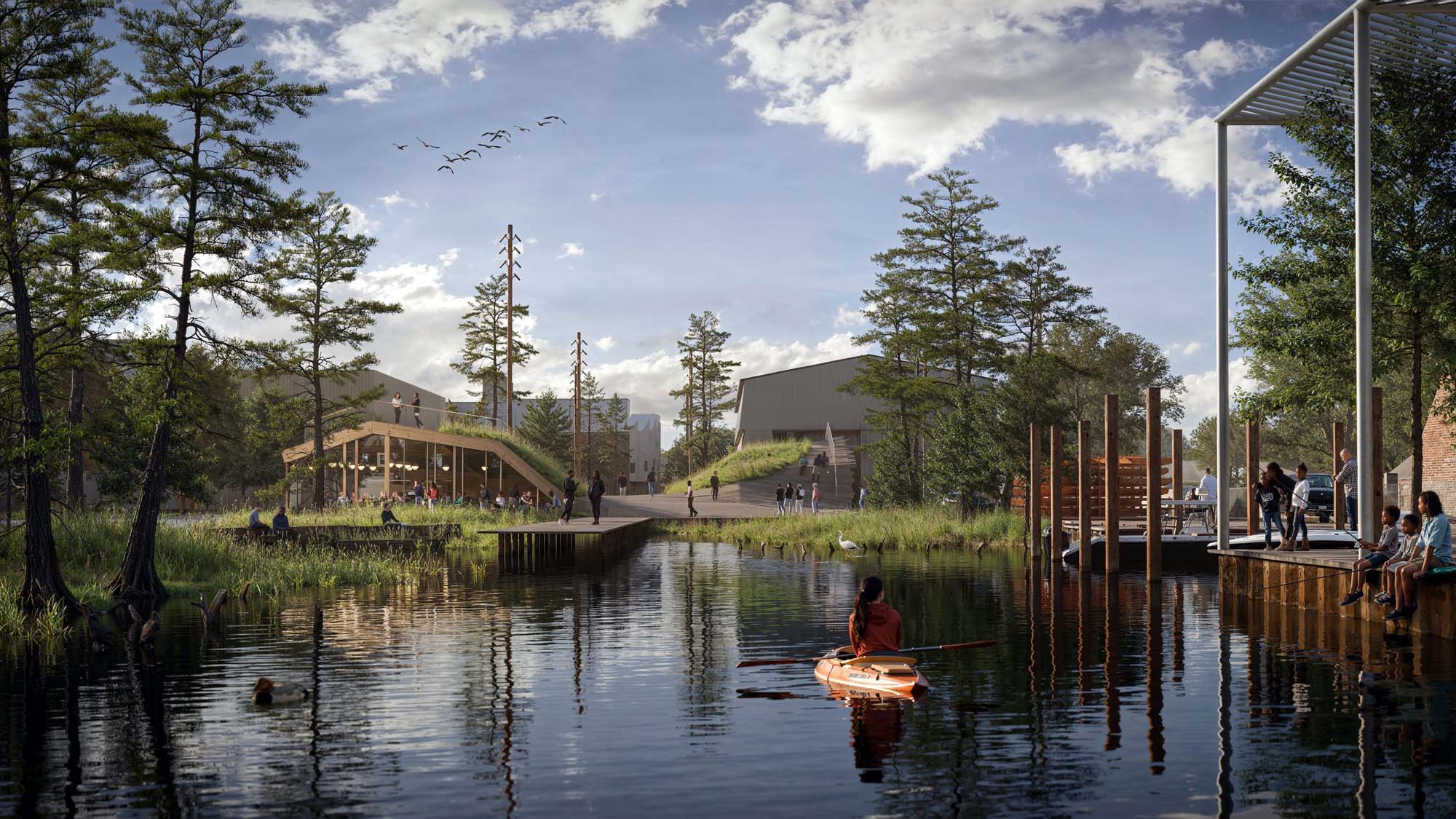
Laying the Groundwork for Little Village
The Curises ability to (so far) pull this off has relied, of course, on Detroit’s still relatively depressed land values and the couple’s personal wealth—prior to starting the gallery, Anthony worked for his family’s real estate business, Curis Enterprises, while JJ was an accountant. But it also stems from the fact that they’ve been at this kind of thing for more than a decade, creating art and activities for the public realm and forging relationships with local communities.
They cut their teeth with the Library Street Collective, a downtown gallery, in 2012. With no art background, says Anthony, they could question why art institutions had to behave a certain way. Since then, Library Street—located in Downtown’s Belt Alley, which they’ve helped convert into a thriving center of culture and nightlife by supporting murals, public art, galleries, cafes, and more—has branched out from gallery exhibitions into signage, murals, events, and public installations in civic and historical spots around the city.
“We were always equally interested outside of the brick and mortar as we were with what was happening inside the gallery itself,” says Anthony Curis.
In laying the ground for Little Village, the Curises engaged in dozens of conversations with immediate neighbors, local property owners, municipal leaders, and local groups like the Neighborhood East Village Association, Jefferson Inc., and The Villages of Detroit CDC.
“Anthony would constantly say, ‘I’m speaking with this business, or this building, or this person” says Simon David, principal at New York-based OSD, The Shepherd’s landscape architect. Joshua Elling, CEO of Jefferson East, calls Little Village a “development that raises up the entire neighborhood.” He helped broker local connections, advised the Curises (as did other community members) to include spaces for local nonprofits and businesses, and prepared the team for any initial pushback—particularly as they come from far greater means than most community members.
Remembers Anthony Curis, of his relationship with the community: “It’s about building that trust with them, so they know that not only we are committed to this, but that this is more about them than it is about us.” He chafes when people call Detroit a tabula rasa for urban experiment. “It is a place of experimenting. It is a place of new ideas. But there is a lot of history here that needs to be addressed. It’s not a blank canvas. There’s so much history and so much that’s gone into getting the city to where it’s at.”

Restoring the Community Anchor
More than 8,000 people attended the Shepherd’s opening this May, most dressed informally, eating, sitting on the grass, dancing and singing. It was clearly a local crowd—a dense, happy mix of races, ages, classes and professions. The poet laureate of Detroit, Jessica Care Moore, spoke movingly about varied communities pulling together to create a reborn city. The Urban Art Orchestra—appropriately bringing classical music dramatically into the urban present—brought the house down. It felt like the emotional spirit of the former church, memorialized by its soaring structures and textured symbols, made relevant again for a new time and purpose.
The Curises’ impressive design team, a mix of local and non-local talent, has struck a creative balance between respectful preservation and energetic insertion—a dialogue between old and new that foregrounds historic craft and story while charting a creative, community-centered future. Inside the Shepherd’s restored shell, Brooklyn-based Peterson Rich Office have installed two white gallery boxes (one in the church’s nave, and another in its north transept), whose texture and heft give them singular, rooted presences while nodding to (and not overshadowing) the robust ecclesiastical forms around them. The cubes’ rust-hued top edges talk to the height and color of existing column capitals. A new torqued stair channels the curvature of an arched window. Cove lighting accentuates historical arches, vaults, and (subtly whitewashed) bands of decoration while leading you toward mysterious new forms.

“It’s about how to transform a powerful, charged place into a kind of art that will bring people together,” notes firm cofounder Miriam Peterson. Her partner, Nathan Rich, called the Shepherd’s context “an inspiring canvas,” from which they could accentuate or shift one’s experience of form, material, structure, light, and movement. Or from which they create new kinds of spiritual experiences.
Above the nave gallery they have created a new mezzanine that simultaneously provides a more intimate (including a closer look at the ceiling) and wide-angle perspective of the building, not to mention a unique new stage for performers. A circular oculus in its center, visually connected to the gallery below, is surreptitiously uplit, so that it appears to float. Strategic cuts in the gallery boxes in some cases lead visitors on a clear procession into the church’s core, in others frame historic details like stained glass windows and old crafted doorways.
Outside the church, OSD’s landscape transforms the Shepherd into a place that will be enjoyed by art lovers, yes, but by everyone else; helping them feel welcome, want to linger, and come back. The site’s edges contain no fences, while the main connector, a rippled-edged former north/south alley now known, in a continuum of the Shepherd’s indoor condition, as the “Nave,” provides a clear, charming pedestrian spine. Various outdoor rooms, framed by shrubs and trees, delineate zones for varied activities. Undulating grassy areas are perfect for lounging or playing with children; a nook abutting the church is a good place to get away and read. Small, grassy mounds by Castor Design provide quirky places to chat. Arguably the most energizing space is the Charles McGee Legacy Park, just south of the church, in which the artist’s fantastical, oversized sculptures—explicitly meant for touching and playing on—alternately lie down or stand up; are amorphous abstractions, or clearly human. The skatepark, with colorful graphics adorning its curving infrastructure, was designed in collaboration with Tony Hawk and Binion. A multistory sculpture by Zak Ové resembles an Afro-futurist totem pole, or, at certain angles, a rocket aimed for the moon.
The area’s history suffuses the place—both its wondrous and difficult times alike. Crushed bricks salvaged from the adjacent convent, which lay out artful reddish pathways, allude to shattered glass and decrepit structures, says David. “We wanted to harness some of the character of the East Village. It’s full of stories of communities past, and of dilapidation and decay and renewal.”

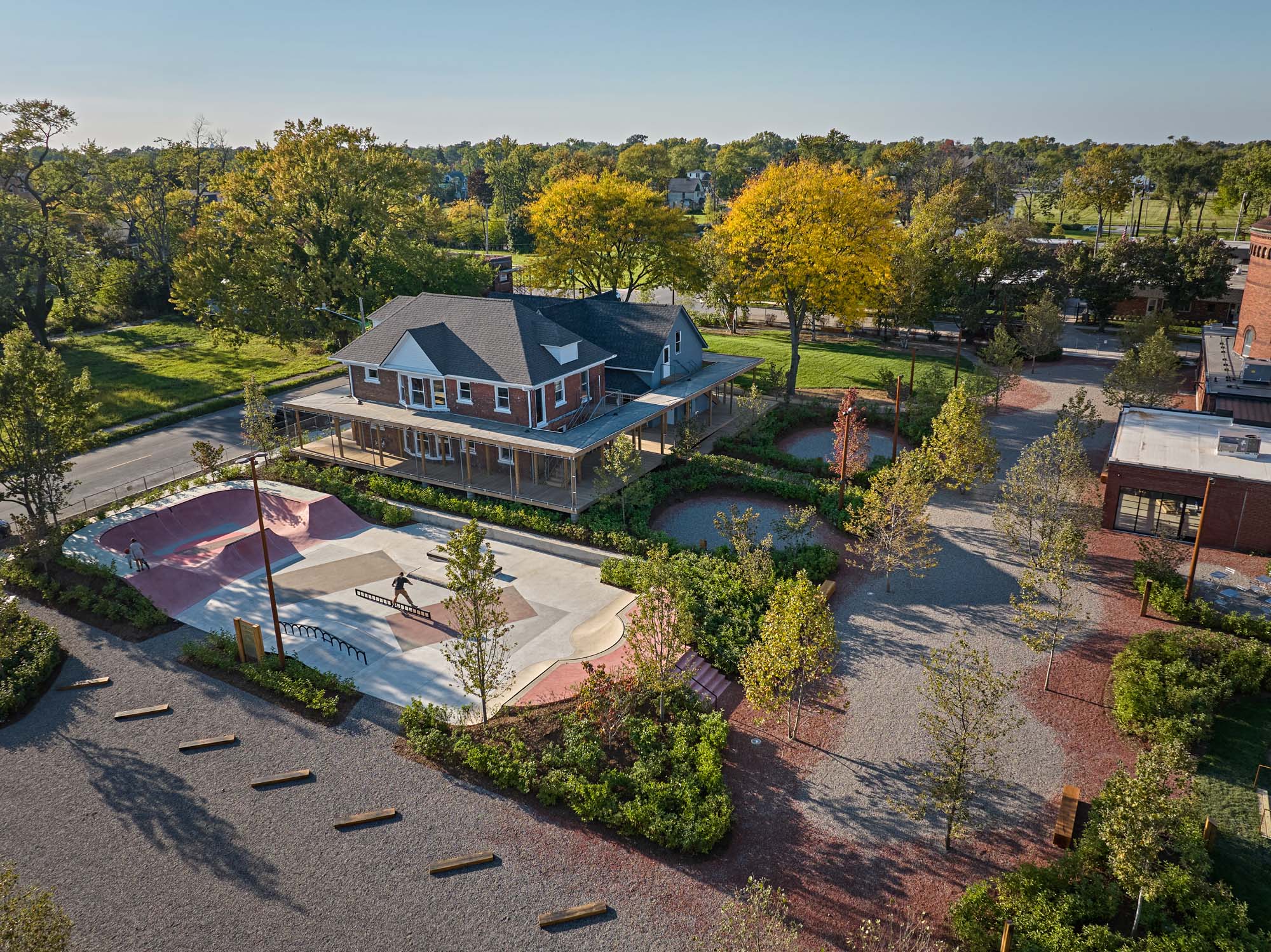
A Growing Microneighborhood that Blends Old and New
A few blocks north, OMA’s work on Lantern unites three industrial buildings of brick and concrete block, which are now focused on a semi-enclosed, reddish concrete courtyard, with beckoning terra cotta bleachers. This central space occupies part of the complex that had collapsed, leaving just a skeletal steel trellis. They’ve smartly left it intact as a historic centerpiece, and, when needed, a frame for temporary canopies. The courtyard extends inside, where it will serve as the floor of the sawtooth-roofed bar.

Signal Return and PASC’s areas alternate between exhibition, learning, and workspace, while Assemble Sound occupies a cavernous storage space. Exterior interventions include dramatically extruded windows that serve as vitrines for art. The most intensive intervention, though, is on the CMU-supported south side (fronting the café and shop) where OMA painted the facade white and drilled 1,353 holes. They filled them with off-the-shelf glass bullets, which during the day pull in a repetitive soft light and at night project a glowing, lantern-like effect that the building’s new name suggests. It’s a dramatic gesture, but overall the projects is—like the Shepherd— a subtle threading of past and present that gives equal respect to both.
“It looks both new and old,” says OMA partner Jason Long. “Our big interest is in bringing people, and buildings together. The moment of the signature, singular gesture is over.” He adds that he loves the impact his firm can have in a city like Detroit, where the scale is smaller than the world capitals it often works in, and the need is more pronounced—and appreciated. “If this were in Greenpoint, it would be just another thing,” he says.

The Curises, perhaps to their credit, can’t seem to stop. For Louis Buhl & Co. they’re working with LA-based LOHA architects and for Stanton Yards, New York-based SO-IL. And there appears to be even more in the works, if you listen to the whispers. But as they get Little Village up and running and start to expand, things will still need to be worked out, some a result of their remarkable success. Since the facility is now set to host more performances than originally planned, acoustics in the church may need to be improved. While some local design teams, like Holly Jonsson Studio (who designed interiors for ALEO) and Undecorated (who designed BridgeHouse, which will open soon) have been involved, they may want to branch further into the growing local creative community. And the threat of gentrification, even if it moves a lot slower here than in places like New York, still exists—despite the team’s, and the neighborhood’s efforts to facilitate local artists, nonprofits, businesses, and activities.
“The concerns about displacement are real, but we need to have growth,” notes Jefferson East’s Elling, who has been working to stabilize and grow the area for more than a decade. “Once you have demand, you can use it to drive more inclusive and equitable development.”
Growth, so far, is mostly coming from Detroit itself—often from those who hear about the energy growing at Little Village. Ivy Kitchen, owned by local chef Nya Marshall, is a relatively new addition. Detroit-based Greatwater homes is building a handful of single-family homes. More artists and small businesses are on the way.
Jova Lynne, a local artist and curator, curated the Shepherd’s first exhibition, a sprawling retrospective of Charles McGee’s work, exploring his material and formal evolution as well as the broader impact of his more than 30 years working and teaching in the city. On a tour, she summed up that show, while inadvertently summing up the project at large: “This is a demonstration and amplification of what is possible in the city of Detroit,” she said.

Would you like to comment on this article? Send your thoughts to: [email protected]
Latest
Profiles
Zoha Tasneem Centers Empathy and Ecology
The Parsons MFA interior design graduate has created an “amphibian interior” that responds to rising sea levels and their impacts on coastal communities.
Viewpoints
How Can We Design Buildings to Heal, Not Harm?
Jason McLennan—regenerative design pioneer and chief sustainability officer at Perkins&Will—on creating buildings that restore, replenish, and revive the natural world.
Products
Behind the Fine Art and Science of Glazing
Architects today are thinking beyond the curtain wall, using glass to deliver high energy performance and better comfort in a variety of buildings.



